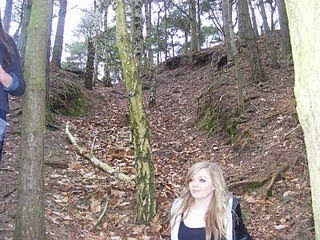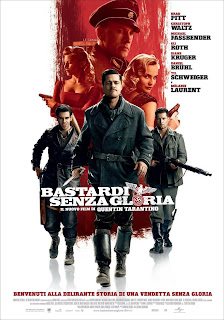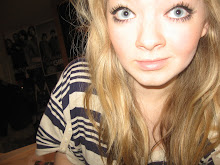Our film includes a number of forms and conventions typical of the thriller genre. Most thrillers rely heavily on music, hoping it will create the perfect dramatic soundtrack and reinforce what they are trying to convey (for example, a crescendo may be used at a pivotal moment.) I think we used music to a good effect, especially to create tension and a suspenseful atmosphere during the chase and discovery sequences. We also conformed to the conventions of the thriller by choosing not to reveal the indentity of the killer. In most thrillers, this is usually one of the last mysteries to be revealed, having led the audience through a number of twists and turns and eventually shocking them at the end by revealing a villian completely different to the person they suspected. By concealing the murderer, we created a feeling of suspense and left scope for it to be maintained throughout the rest of the film. However, where our film challenges the conventions of real thriller films is the contrast between the comparitively relaxed opening and the following chase scene. The shots of scenery and the voice-over talking about the small-town do not throw the audience directly into the action as with most thrillers, they settle them.
How does your media product represent particular social groups?
In terms of character, I feel our film represents two particular groups. The opening voiceover implies a young woman, who happens to be old before her time. She talks about a town which is classed as 'dead' and seems wise to everything that is going on. The town in question is said to have an aging population where the residents are 'hard-working, honest and religious'. This social group of people is very easy to conjure an image of in your mind, and the audience will feel that they are good people who don't deserve to live in a town so plagued by disapperences. Our film also represents teenagers. Although the media nowadays tends to portray the younger generation as living crazy lifestyles, spending time drinking and partying, our film shows how vulnerable teenage girls especially can be.
What kind of media institution might distribute your media product and why?
A film institution such as film4 would be best to distribute our product. They are a British company, famous for creating films using British money, directors and actors, which our film has done too. They responsible for gritty down-to-earth films such as 'This is England' and 'Slumdog Millionaire'. They don't rely on explosions and special effects as Hollywood produced films tend to do and work more on creating an air of realism - something we have tried to achieve in our media product. Film4 is assured as the best choice as most of its films are aimed at the younger generation - like ours is. Its films are shown both on its tv channel and in the cinema, making them very accessable for teenagers and young adults.
How did you attract/address your audience?
We aimed to attract our audience by contrasting the initial and fairly relaxed voiceover and scenery shots with the cut to a chase sequence. Just when the audience are settled we aimed to throw them into the action and hook them so they will want to continue to watching the rest of the film. Our film approaches a mature subject matter, hence attracting older teenagers and young adults.
What have you learnt about technologies from the process of contructing this product?
I have learnt a lot about the technologies used in physically contructing a media product, in this case a film. Whilst filming I have learnt how to use a camera to its best effect and how to frame shots to portray what I wanted. I have also learnt how to take advantage of equipment such as the tripod for steady filming. Before I entered into the process of making this film, I was not aware of how much work went into the editing. This occupied my group and I for the bulk of the time we had to construct our film, and left us with knowledge of the program iMovie and some of the effects it can provide you with - slow motion, fade in, fade out and the 'dream' effect we used on the scenery shots at the beginning. I now have a good knowledge of how to edit a film, how to import music from iTunes, how to add text, how to record a voiceover and import it into the film, how to burn the film onto a disk and export the finished piece to Youtube.
I have also learnt how important new technologies such as the internet are to film-makers. Youtube especially is a brilliant platform to get your film seen by a wide audience, it is extremely simple to upload a clip onto it, and it is effectively free publicity. Many feature films have their trailers uploaded onto Youtube to generate a word-of-mouth campaign and make sure that as many people as possible hear about the film. Facebook was also a website that helped us in the process of making our product, we posted our thriller on the social networking site to gain feedback and it made our film even more accessable - there are always large numbers of people on Facebook at any one time. This did make me aware of the damages piracy causes, especially to independent film companies, as it is so easy to put films onto sites such as Youtube.
Looking back at your preliminary task, what do you think you have learnt in the progression from it to you full product?
One of the key things I have learnt since filming our preliminary task is not to make any amateur mistakes. In one scene during our continuity piece, there is what is clearly a thumb in the corner of the screen. Our awareness of ourselves around the camera has improved greatly. My understanding of technology has hugely improved since the first task, I feel much more confident using iMovie and editing a film to convey different atmospheres. I also have a greater knowledge of camera shots and different cuts and how to use them to to their full effect. In our first task we attempted using quick cuts to create a building sense of tension - something we carried into the full product. In the final film I feel the cuts worked better as they seemed a lot smoother, the shots were all framed better and a lot more thought was put into the planning and filming of them.









































